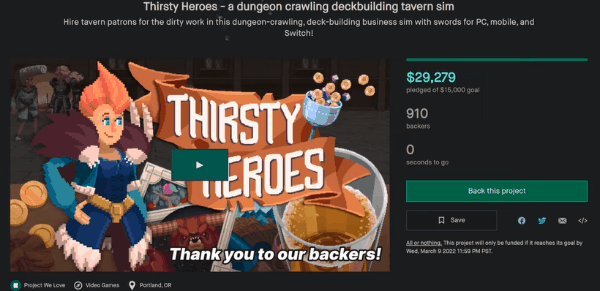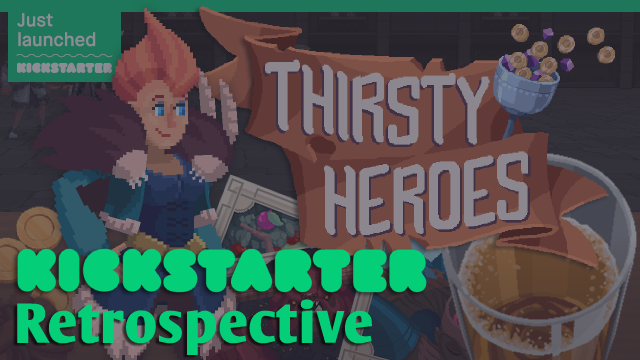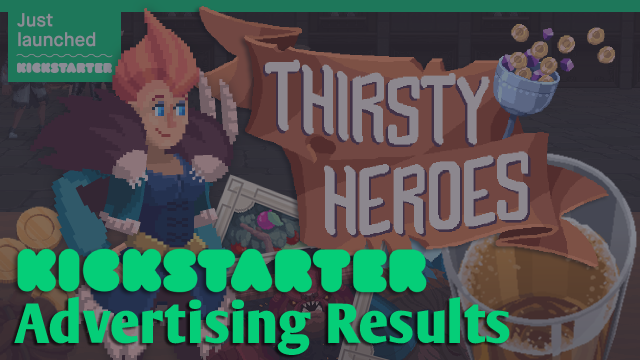We raised $29K from 910 backers, hooray! ?
Where does all that money go? Is it enough to make the whole game?
This post is one in a series of retrospectives for our February 2022 KS campaign that raised nearly $30K. See the full overview here.
Funds Raised
| Raised | $29,279 |
| Dropped Pledges | -$317 |
| Refunds | -$56 |
| Kickstarter Fee | -$1,445 |
| Payment Processing Fee | -$1,044 |
| Total | $26,417 |
True to their word, Kickstarter charged 8.6% fees for our campaign. We also lost 1.2% to dropped pledges/refunds.
The takeaway is that you can expect to receive 90% of your pledged amount.
Advertising Costs
| Revenue After KS Fees | $26,417 |
| Ad Spend (Personal) | -$1,047 |
| Ad Spend (Agency) | -$4,360 |
| Ad Agency Fee | -$874 |
| Profit | $20,136 |
We spent about $6K on advertising, breaking even in terms of pledge dollars generated, which was somewhat disappointing.
I wrote more about the advertising experience in a separate post:
Funds distribution
| KS Net Total | $20,136 |
| Composer Royalties | -$2,709 |
| Company Net Total | $17,427 |
| Artist Share | -$3,485 |
| Remainder | $13,942 |
Our composer is entitled to $4.50 for each of our 602 sales of the digital soundtrack, and my artist partner is entitled to 20% of the company’s net revenue generated by the game.
That leaves me with $14K to pay myself and hire other work needed for the game, such as additional tracks from our composer.
My cost of living is $4K a month (before taxes), so I have enough to pay myself for about three months, and even less if I want to pay my artist partner. It’s not enough to finish the whole game.
Additional Funding Likely Needed
Kickstarter is definitely a great way to raise funds and grow your audience, but unless your campaign goes viral, you will probably not make enough money to pay yourself for full time development. It can be great to advance your community building, get game feedback, and raise funds for overhead costs though.
In our case, we raised enough to enable us to get the game ready to pitch to publishers or private investors for additional funding, and having a community of backers is invaluable in many other ways aside from money, so we consider the campaign an unqualified success.



